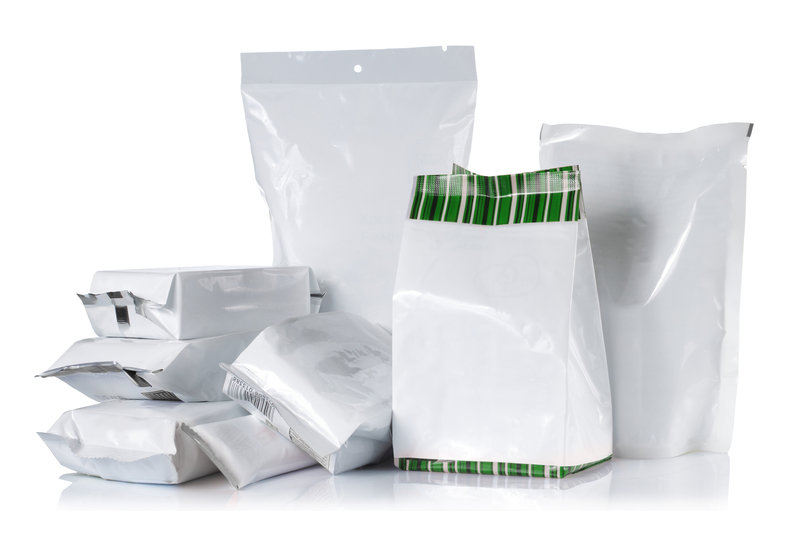Plastics You Should Stay Away From: A Comprehensive Guide
In today's modern world, plastic is everywhere--from food packaging and toys to kitchenware and electronic devices. While plastics offer immense convenience, not all plastics are created equal, and some can threaten our health and the environment. In this article, we'll explore which plastics you should avoid, why they are dangerous, and how to make healthier, safer choices for you and your family.

Understanding Plastic Types: The Resin Identification Code
Before diving into specific plastics to steer clear of, it's important to understand how plastics are labeled. Most plastic products have a Resin Identification Code (RIC) on their packaging, which is a number from 1 to 7, usually inside a triangle made of arrows. Each number denotes a different type of plastic resin, and knowing what these symbols mean can help you make informed decisions.
- 1: PET or PETE (Polyethylene Terephthalate)
- 2: HDPE (High-Density Polyethylene)
- 3: PVC (Polyvinyl Chloride)
- 4: LDPE (Low-Density Polyethylene)
- 5: PP (Polypropylene)
- 6: PS (Polystyrene)
- 7: Other (may include BPA, Polycarbonate, etc.)
While some plastics are relatively safe, many contain or release toxic chemicals. Let's examine plastics you should avoid and the health risks they pose.
1. Polyvinyl Chloride (PVC) - Resin Code #3
Why Avoid PVC?
PVC, or polyvinyl chloride, is widely used in pipes, plumbing, shower curtains, vinyl flooring, toys, and food wraps. Unfortunately, PVC is often referred to as "the poison plastic" for a good reason.
- Contains and releases toxic chemicals such as phthalates and dioxins during its manufacture and use.
- Phthalates are added as plasticizers to make PVC flexible, but they can disrupt hormones in humans, especially children.
- When heated or burned, PVC emits highly toxic dioxins, which are linked to cancer, developmental disorders, and immune system damage.
- Improper disposal of PVC products contaminates soil and water, posing environmental risks.
Recommendation: Stay away from products marked with a 3 on the recycling triangle. Choose alternatives like glass, stainless steel, or safer plastics for food storage and children's products.
2. Polystyrene (PS) - Resin Code #6
The Problem with Polystyrene
Polystyrene, known commercially as styrofoam, has a wide range of uses, from disposable coffee cups and takeaway food containers to packing peanuts and insulation materials.
- Contains styrene, a possible human carcinogen according to the International Agency for Research on Cancer (IARC).
- Can leach styrene into food and drinks, especially when heated or with fatty/acidic foods.
- Non-biodegradable: Polystyrene breaks into tiny microplastics, polluting oceans and harming marine life.
Recommendation: Say no to styrofoam and polystyrene-based containers. Opt for paper, biodegradable, or reusable options for food and drinks.
3. Polycarbonate and Other #7 Plastics
Why Number 7 Plastics Are Risky
Plastics marked as "Other" or #7 are a miscellaneous category that often includes polycarbonate and bioplastics. Polycarbonate may contain Bisphenol A (BPA), which has been widely debated for its health implications.
- BPA is an endocrine disruptor mimicking estrogen, linked to fertility disorders, behavioral issues in children, heart disease, and diabetes.
- Polycarbonate is found in some reusable water bottles, food storage containers, and the linings of metal food cans.
- BPA can leach into food or beverages, especially when heated or exposed to acidic substances.
Recommendation: Avoid plastics labeled as #7 unless they are clearly marked as BPA-free. When possible, use glass, stainless steel, or BPA-free plastics for food and drink storage.
4. Avoiding Plastics in Everyday Life: More Than Just Symbols
Sticking to "safe" plastics isn't always enough. The way plastic is used, cleaned, and recycled also affects safety. For example, repeated washing and high temperatures can cause chemicals to leach out of even relatively safer plastics. Here's how to minimize your exposure to hazardous plastics:
- Do not microwave food in plastic containers, regardless of recycling code, unless explicitly labeled "microwave-safe."
- Avoid single-use plastics wherever possible. They are more likely to be made from cheaper, riskier resins.
- Never use damaged or scratched plastics for food or beverages, as this increases chemical leaching.
- Do not wash plastic containers with harsh detergents or in dishwashers unless they are labeled dishwasher-safe.
- Choose alternatives like glass, stainless steel, or ceramic, especially for food preparation and storage.
What About "Safe" Plastics?
Let's briefly touch on plastics generally regarded as safer, so you know what to look for:
- #1 PET/PETE (Polyethylene Terephthalate): Common for water and soda bottles. Generally considered safe for single use but not for refilling.
- #2 HDPE (High-Density Polyethylene): Used for milk jugs, detergent bottles, and toys. Highly resistant to leaching and considered a safer choice.
- #4 LDPE (Low Density Polyethylene): Used for bread bags, frozen food wraps. Safe for food contact, but best to avoid heating.
- #5 PP (Polypropylene): Used for yogurt tubs, straws, and medicine bottles. Heat-resistant and safe for most uses.
While these plastics are less problematic, the safest bet is always to minimize plastic use, especially in relation to hot food, drinks, and children's products.
Environmental Impact of Hazardous Plastics
Why Questionable Plastics Are Bad for the Planet
Plastics you should stay away from aren't just a health issue; they're also an environmental calamity. Hazardous plastics like PVC and polystyrene are among the most difficult to recycle. Many municipal programs simply can't process them, so they end up in landfills--or worse, oceans and rivers, where they persist for centuries. As these plastics break down:
- They fragment into microplastics, infiltrating ecosystems and food chains.
- Animals mistake microplastics for food, resulting in digestive blockages and toxin accumulation.
- Toxic additives like phthalates, dioxin, and BPA seep into soil and water, threatening both wildlife and human communities.
By reducing your reliance on dubious plastics, you're not only protecting your own health but also making a positive impact on the planet.

How to Spot and Avoid Dangerous Plastics
Look for the Codes and Labels
Knowing the resin codes is your first defense. Here's a quick guide:
- Never use #3 (PVC), #6 (PS), or unclear #7 plastics with food, drinks, or for children's toys.
- When in doubt, err on the side of caution, and select alternatives such as stainless steel, glass, or ceramics.
- Remember that "microwave safe" doesn't mean chemical-free. Heating plastics of any kind can promote leaching of hazardous substances.
Ask Questions
When buying products--especially baby bottles, water bottles, storage containers, and toys--ask manufacturers or retailers about the materials used. Many companies now offer full transparency regarding BPA, phthalates, and recyclable content.
Stay Informed About New Research
Scientific understanding of plastics and their effects is evolving. Stay updated on guidelines by reputable organizations such as:
- Environmental Protection Agency (EPA)
- Food and Drug Administration (FDA)
- World Health Organization (WHO)
Check for news about plastics and consumer product recalls, especially those involving children.
Conclusion: Choosing Plastic-Free and Safer Alternatives
In summary, the plastics you should stay away from--including PVC (#3), polystyrene (#6), and many #7 "other" products--pose a threat both to your health and the planet. Toxic plastic additives like BPA, phthalates, dioxins, and styrene can leach into your food, water, and even the air you breathe. Avoiding these is one of the best steps you can take for a healthier lifestyle.
- Choose glass, stainless steel, or certified safe plastics for food and drink storage.
- Steer clear of plastic wrap, takeout containers, and toys made with hazardous resins.
- Support brands and products that use transparent, non-toxic, and recyclable materials.
- Reduce, reuse, and recycle responsibly--focus on minimizing overall plastic consumption.
Educate your family and friends about which plastics are dangerous. As consumers, our voices and choices drive industry change. By favoring safer products and demanding more sustainable solutions, we can help ensure a greener, healthier future for all.
Eco-Friendly Resources and Further Reading
For more tips on avoiding hazardous plastics and living a plastic-free lifestyle, check out organizations such as:
- Plastic Pollution Coalition
- Environmental Working Group (EWG)
- The Story of Stuff Project
Remember: Your choices matter. By staying informed about the plastics you should avoid, you make a meaningful impact on your well-being and our world.